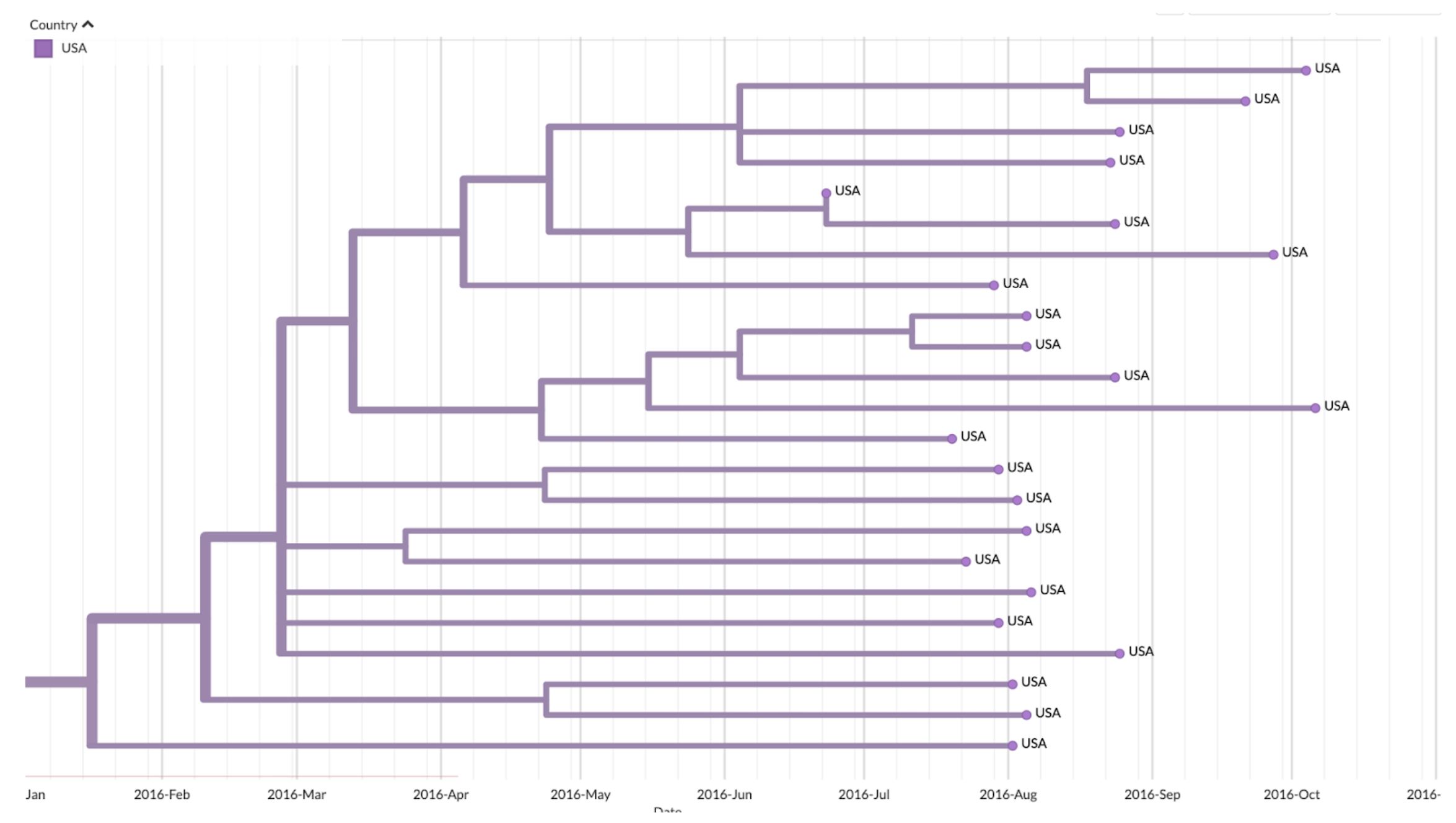By the end of this video, you should understand the differences between temporally-resolved phylogenetic trees (time trees) and genetic divergence phylogenetic trees. You should be able to identify a time tree given the x-axis information of the tree.
Take-home messages
- The evolutionary rate tells us, on average, how long it takes to accrue new nucleotide mutations across the genome. Genetic divergence trees summarize how many mutations separate different tips and nodes in the tree. Taking these two pieces of information together, we can use the molecular clock to translate a genetic divergence phylogenetic tree into a temporally-resolved phylogenetic tree, also called a time tree.
- In a temporally-resolved tree, the x-axis will be given in calendar time (or absolute time), rather than in the amount of divergence.
- The x-axis position of tips is given by the date that a sample was collected from an individual. The sampling date of a sample is usually specified in the metadata attached to a sample.
- The x-axis position of internal nodes represents when we infer that those inferred ancestral viruses likely circulated. Typically those positions will be specified with a point estimate of the date, and a confidence interval around the point estimate.
- Sometimes in genomic epidemiology, we sometimes talk about internal node positions as the “time to the most recent common ancestor” or TMRCA. The TMRCA is the amount of time that you must travel back from the tips in order to find the most recent inferred ancestor given the genetic diversity you have observed at the tips.
Questions

- Given the temporally-resolved tree above, when (approximately) was the most recently sampled tip collected from an infected individual?
- Given this tree, when do we think that the ancestral virus represented by the root of this tree (approximately) circulated? Don’t worry about confidence intervals, just think about the point estimate.
- What is the TMRCA of all of the samples in this tree? *hint* Think about which node is the ancestor of all samples in this tree.



